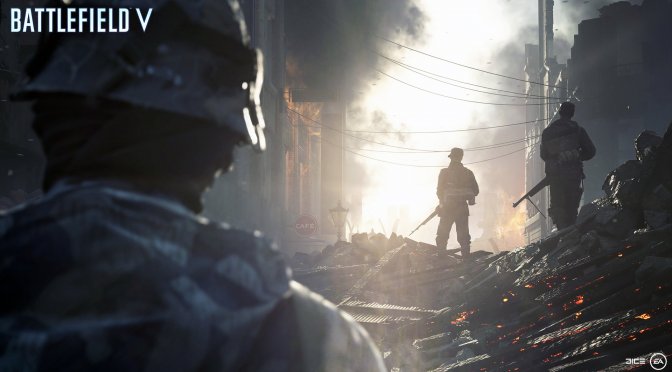The embargo for Battlefield 5’s Gamescom 2018 coverage has been lifted and a lot of media has shared videos showing the game with real-time ray tracing, running on an NVIDIA GeForce GTX2080Ti. Digital Foundry was one of them and shared some additional tech information about the game’s current state.
According to Digital Foundry’s Alex Battaglia, Battlefield 5 ran with 60fps at 1080p on an NVIDIA GeForce RTX2080Ti with real-time ray tracing. When he tried to run the game at 1440p, he noticed sub-60fps framerates that were around 40-50fps and when he tried a 4K resolution, he experienced sub-30fps framerates.
However, it appears that DICE can still further optimize the game when using RTX. Some of these optimizations can lead to a 30% performance boost so it will be interesting to see how the final game will run. Furthermore, it appears that the resolution from which the rays per pixel is derived is exactly the same with the internal resolution. This basically means that real-time ray tracing is being done in 4K when you are running the game in 4K. Perhaps a locked 1080p resolution for this particular setting could do wonders to performance when using higher resolutions.
Not only that, but DICE is also using its very own de-noise techniques in order to smooth the real-time ray tracing reflections. As such, the team is currently not using NVIDIA’s Tensor Cores, something that would obviously offer a performance boost (we don’t know whether the team will figure out a way to use them in the final version).
Last but not least, real-time ray tracing in Battlefield 5 will also affect the game’s CPU requirements. According to DICE, those wishing to use RTX will need a better CPU with more threads than those playing the game without it. As DICE told PCGamesN.
“What we have done with our DXR implementation is we go very wide on a lot of cores to offload that work so we’re likely going to require a higher minimum or recommended spec for producing RT. And very wide is the best way for the consumer in that regard, with a four-core or six-core machine.
We haven’t communicated any of the specs yet so they might change, but I think that a six-core machine – it doesn’t have to be aggressively clocked – but 12 hardware threads is what we kind of designed it for. But it might also work well on a higher clocked eight thread machine.”
John is the founder and Editor in Chief at DSOGaming. He is a PC gaming fan and highly supports the modding and indie communities. Before creating DSOGaming, John worked on numerous gaming websites. While he is a die-hard PC gamer, his gaming roots can be found on consoles. John loved – and still does – the 16-bit consoles, and considers SNES to be one of the best consoles. Still, the PC platform won him over consoles. That was mainly due to 3DFX and its iconic dedicated 3D accelerator graphics card, Voodoo 2. John has also written a higher degree thesis on the “The Evolution of PC graphics cards.”
Contact: Email

